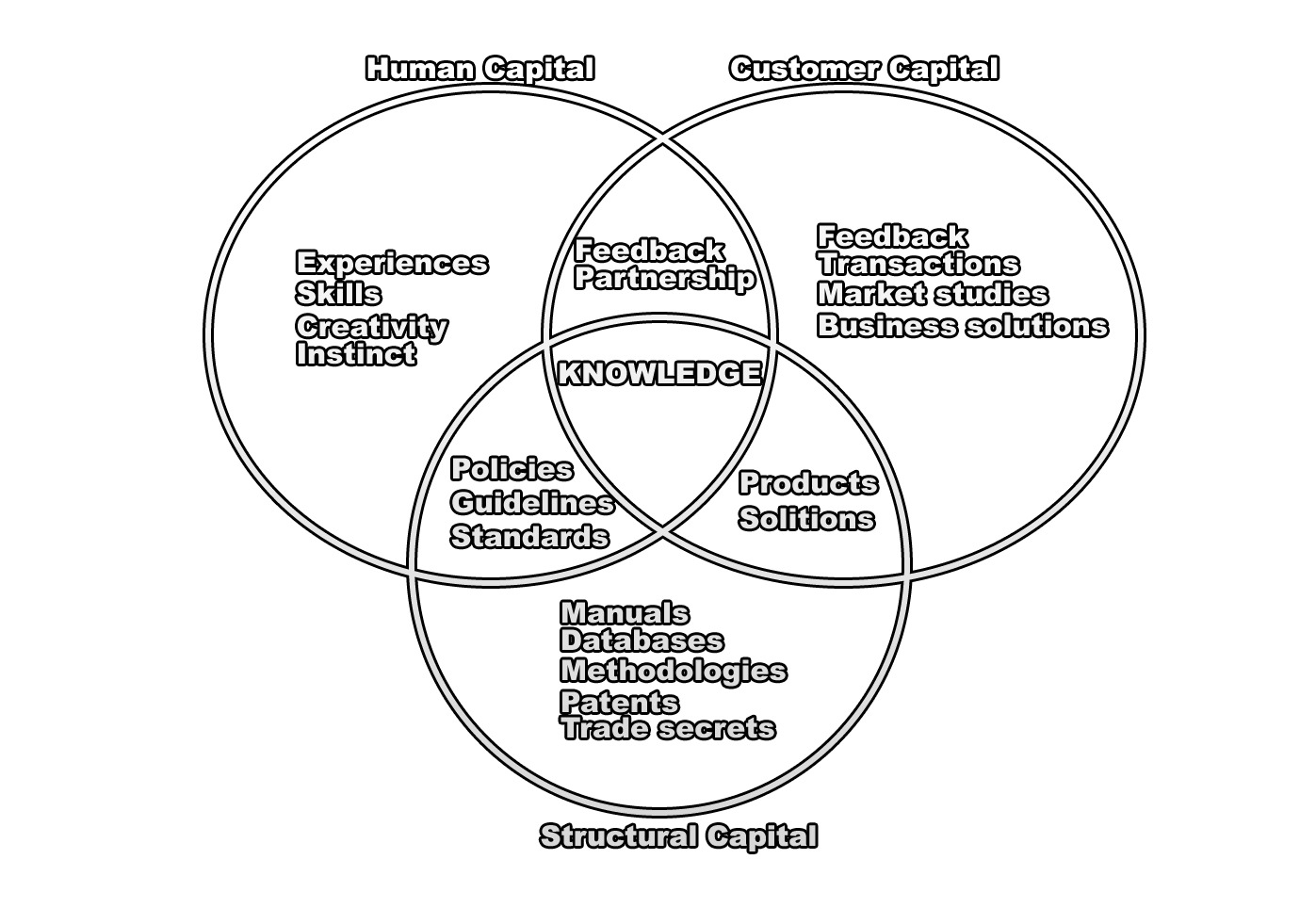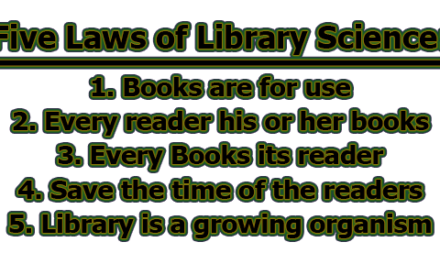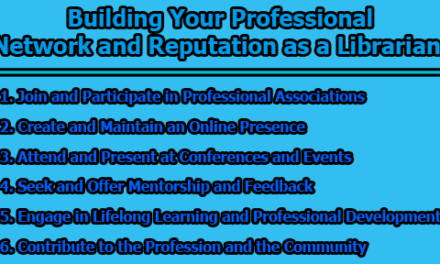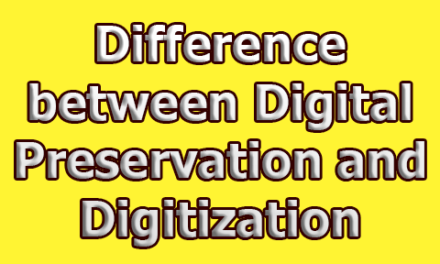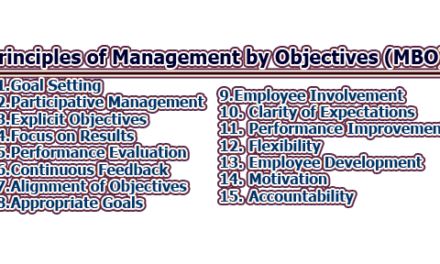In a competitive global world, the measurement of the worth of the organization lies not just in its material wealth but also in the intangible assets/intellectual capital. These are the procedures, know-how, experience, and skills that propel the organization to its highest level of proficiency and efficiency. Tacit Knowledge is normally controlled and owned by the employees in the organization. Knowledge, personal and organizational, has been generally regarded as “capital”. Today, the organization demands from employees to be more proactive and respond to the faster cycle of knowledge creation. In the rest of this article, we are going to know about the Components of Intellectual Capital.
What is Intellectual Capital?
The concept of Intellectual Capital (IC) is fundamental to most views of KM. The concept of IC, however, become popular in the early and mid-1990s. Intellectual Capital is a tool for managing knowledge. It deals with tacit and explicit knowledge. Intellectual Capital is the combination of human, structural, and relational (social) capital.
In an organization context, Intellectual Capital means the brains of its employees, their know–how, the process, and customer knowledge that they create – have always been a force of competitive advantage.
Thomas Stewart (1997) defines Intellectual Capital as the intellectual materials- knowledge, information, intellectual property, and experience can be put to use to create wealth.
Klien (1998) defines Intellectual Capital as “knowledge, experience, expertise and associated soft assets, rather than hard physical and financial capital.”
Michael Malone defined Intellectual Capital as “the possession of knowledge, applied experiences, organizational technology, customer relationship and professional skills that provide (an organization) with a competitive edge in the market.”
Intellectual capital (IC) represents the value of a company’s trademarks, patents, or brand names. It is a company’s collective brainpower or composite of experience, knowledge, information, and intellectual property.
Components of Intellectual Capital:
The concept of Intellectual Capital was first introduced in the late 1980s by various management scholars, including Thomas A. Stewart and Leif Edvinsson. At that time, it was defined as the intangible assets of an organization that contributes to its overall value and competitiveness. The two major components of Intellectual Capital that were initially identified were:
- Information and Knowledge Capital: This refers to the knowledge and skills possessed by employees, including their education, experience, and expertise. It also includes the explicit and tacit knowledge that is stored in documents, databases, and other information systems.
- Structural Capital: This refers to the organizational infrastructure and processes that support the creation and utilization of Information and Knowledge Capital. It includes things like patents, trademarks, copyrights, databases, software, and other systems that support the organization’s operations.
These two components of Intellectual Capital were seen as critical to an organization’s success because they are not easily imitated by competitors and can provide a sustainable competitive advantage. However, since then, the definition and components of Intellectual Capital have evolved and expanded to include other areas such as customer capital, social capital, and human capital.
Intellectual Capital is the document form of human capital and is closely related to customer capital. There are actually three major components of Intellectual Capital which are as follows:
1. Human capital: Human capital refers to individual employees’ capabilities, knowledge, skills, experiences, intuition, and attitudes. It represents the tacit knowledge embedded in the minds of people in organizations. Human Capital is inherent in people and cannot be owned by an organization. Therefore Human capital can leave an organization when people leave. Human Capital also encompasses how effectively an organization uses its people resources as measured by creativity and innovation. Encouraging knowledge sharing and knowledge transfer between people within the organization is one of the methods that can be effectively employed to manage human capital. Encouraging staff to participate in seminars, workshops, and continuous education is another way of enhancing the human capital within the organization.
2. Structural Capital: Structural capital refers to the learning and knowledge enacted in the day–to–day activities. It includes all of the physical (tangible) resources for knowledge storing in organizations – such as databases, process manuals, strategies, routines, cultures, procedures, publications, copyrights, trademarks, trade secrets, and licenses. These are created by the employees and are generally owned by the organization. The pool of knowledge that remains in an organization at the end of the day after individuals within the organization have left represents the fundamental core of structural capital.
3. Relational Capital: Relational capital consists of business transactions, customer satisfaction, and relations. Relational capital refers to the organization for formal and informal relations with its stakeholders (investors, creditors, suppliers, and customers) and the perceptions that they hold about the organization as well as the exchange of knowledge between the organization and its external stakeholders. Besides, it includes the connections that people outside the organization have with it, customer loyalty (dependability), customer satisfaction, commercial power, image, and negotiating capacities with financial entities. Improvement in relational capital involves looking outside an organization’s boundaries to such things as developing relationships and trust with customers, suppliers, and surrounding communities.
One influential and recent model of Intellectual Capital was proposed by Moon and Kym (2006). According to their model, the three dimensions (human, structural, and relational capital) of Intellectual Capital can be further subdivided into sub-factors. The dimension of human capital has three sub-factors: employee capability, employee satisfaction, and employee sustainability. Structural capital comprises the sub-factors culture, organizational process, information systems, and intellectual property, while relational capital is divided into three sub-factors customer, partner, and community.
It is apparent that Intellectual Capital refers to the intangible assets of an organization that contributes to its overall value and competitiveness. Over time, the concept of Intellectual Capital has evolved and expanded, and a commonly accepted model identifies three major components: Human Capital, Structural Capital, and Relational Capital. By managing and leveraging these components, organizations can create sustainable competitive advantages and drive long-term success. As the importance of intangible assets continues to grow in the knowledge economy, understanding and effectively managing Intellectual Capital is crucial for organizations seeking to thrive in today’s business landscape.

Assistant Teacher at Zinzira Pir Mohammad Pilot School and College

